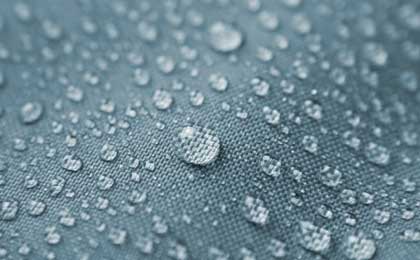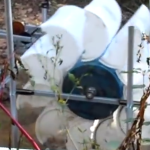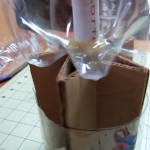Creating Your Own Fabric Protector
Choosing the Right Fabric
Part of the process involves sealing in those microscopic spaces throughout the weave of the fabric. Unfortunately, many synthetic fabrics do not respond well to treatment. Consider quality fabric that is made from 100% cotton and canvas, and always pick items that are a little bit bigger than what you will need. The cotton will shrink during part of the treatment process, and you don’t want to come up short at the end.
Preparing the Material
Wash the fabric in hot water and dry over high heat. Doing so will cause the fabric to condense and the gaps in the weaves will get smaller. Allow the material to cool before hanging on a clothesline. Make sure that the material is pulled taut and secured in place. Thoroughly mix a quart of BOILED linseed oil and a quart of mineral spirits together in a small bucket.
Take a brush and paint the mixture evenly across the entire surface of the fabric. Make sure that it is coated everywhere. You can also lay the material on a flat surface and stretch it out, or you can even crumple it into a ball and soak it in the bucket of solvent and linseed oil.
However, these alternatives may cause the fabric to be over-soaked, and this can significantly increase the amount of time that it takes to completely dry. Too much solvent also releases more fumes and poses a greater hazard. Painting it on with a brush helps to ensure that just enough is applied to get the job done.
The amount of drying time will vary depending on the amount of moisture in the air, quality of air circulation, temperature and a few other factors. Expect thinner material to dry in a day or two, and it may take up to a week for thicker fabrics. The vapors and odor will dissipate after a few days, but this process could take longer if too much was applied to the material.
Ventilation
It is essential to keep the treated fabrics in a well-ventilated area. If treatment occurs in an enclosed space, make sure that the windows are partially open and that a fan is continually blowing. You also want to make sure that the room is not hot and dry. The fumes from this mixture are toxic and flammable, and they can accumulate into greater concentrations in poorly ventilated and hot rooms.
The material will dry faster in warm, dry and breezy conditions. Never remove, fold and store fabric until they have been completely dried and the odor has significantly dissipated. You will be able to tell simply by touch and smell during the drying process. Fold and store the material on a shelf instead of inside a pouch or bag. You can pack the fabric normally when traveling, but keeping it exposed to air will make it more effective.
Finally, this treatment is not intended for things like treating sheets, drapes or blankets. This is primarily a water-proofing option for material that will be used for tarps or tents. However, it works well, and it is worth the effort if you have some time to go through the process.
More Articles From This SIte
Pages:
- 1
- 2














